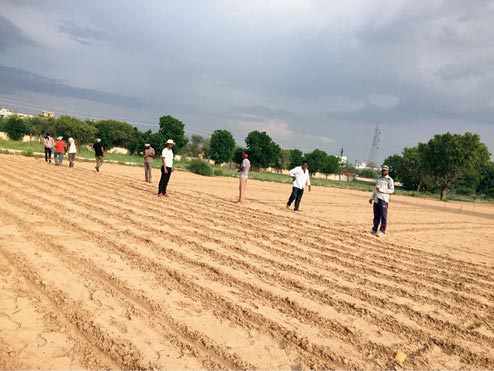

Calcutta: A report on Rajasthan prisons, prepared by a researcher from Calcutta, strongly advocates the open- prison system.
Smita Chakraburtty, an independent researcher who was previously commissioned to prepare a report on Bihar prisons, visited 15 open prisons in Rajasthan and interviewed 428 prisoners. Her report, launched in hard copy by the chief justice of Rajasthan in Jaipur on Monday, recommends open prisons across the country as a humane - and practical - model of prisons.
Open prisons are prisons without bars. They can be set up in any place, outside the walls of a prison, where a prisoner can live with his family in a house and earn his own living. But he has to return to the open prison at a scheduled hour every day.
The system proves that freedom, even partial, reintegrates prisoners with society and restores to them some dignity that is due to every individual, said Chakraburtty. "The system leads to reduction in prison overcrowding, the rate of recidivism - the tendency of a convicted person to reoffend - is negligible, and most importantly it is a humane system," she said.
Chakraburtty was appointed honorary prison commissioner by Justice K.S. Javeri, the executive chairman of the Rajasthan State Legal Services Authority, to study the open-prison system and parole practices of Rajasthan.
She had earlier conducted a detailed study of the 58 prisons of Bihar, speaking to 30,070 prisoners. Her report was widely acknowledged.
In Rajasthan, the state that pioneered the system from the Fifties, those who have been in a prison for over five years and have maintained good conduct are eligible to get into an open prison. It allows them to stay in quarters outside the prison walls with their families and find their own living.
Rajasthan, which has about 100-odd regular prisons, has 29 open prisons, the largest number of open prisons in a state in the country. The study started in April 2017 and continued till November. "The open prisons of Rajasthan are called open camps because there is no element of confinement in this system," said Chakraburtty. "On my first visit to Sanganer, the largest open prison where about 400 convicted prisoners live with their families, I felt like I was entering a village where the prisoner community resides."
Since open prisons have a history of decades in Rajasthan, prisoners do not face excessive resistance from society when they relocate to open prisons, said Chakraburtty.
The administration benefits in another way. "A comparative study between the Jaipur Central Jail and the Sanganer Open Prison shows that the open prison is 78 times cheaper than the closed one."
There are problems, of course. Thousands of prisoners, eligible for stay in an open prison, are languishing in closed prisons, because seats are not available. Only those who have served 10 years in a prison, are usually lifetimers and have a record of a severe crime, most often murder, get a chance to go to an open prison, after a long wait.
Yet this is a unique and successful system that should be adopted, Chakraburtty said.
The report recommends at least two open prisons in each district of Rajasthan, a model that then can be replicated across the country.
Justice Joymalya Bagchi of Calcutta High Court has examined the suggestions.










